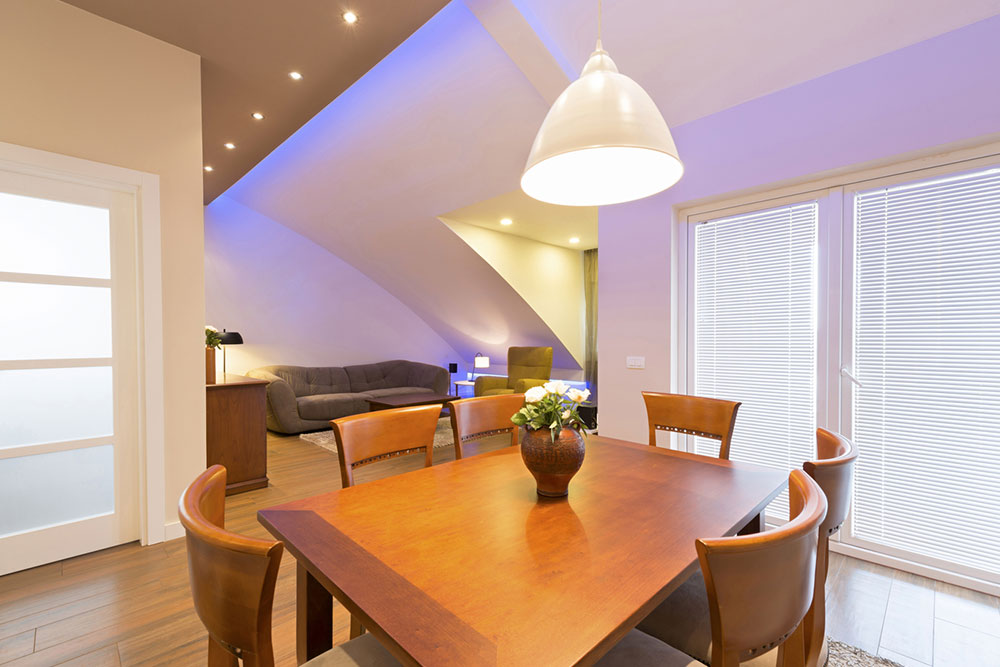
20 common home lighting mistakes to avoid
Lighting is a vital element in interior design, elevating the ambiance and functionality of living spaces. Yet, common lighting blunders can mar even the most carefully crafted interiors, and it is absolutely crucial to steer clear of these 20 frequently-made home lighting mistakes. Avoiding these will help to create a space that seamlessly combines practicality and visual appeal and is easy to adapt with changing needs.
Neglecting Layered Lighting
Relying solely on overhead lighting can lead to harsh shadows and an uninspiring atmosphere. Embrace layered lighting by integrating ambient, task, and accent lighting to achieve a balanced and versatile illumination.
Selecting the Wrong Color Temperature
The color temperature of lighting can profoundly impact the mood and aesthetics of a room. Avoid the pitfall of mismatched lighting by choosing bulbs with suitable color temperatures. Warm white (2700k-3000K) creates a cozy atmosphere, while cool white (3500-4100K) suits task-oriented areas.
Omitting Dimmer Switches
Failure to install dimmer switches limits the control over lighting intensity. Dimmers enable the better adjustment of brightness for various activities, fostering ambiance while conserving energy.
Ignoring Energy Efficiency
Overlooking energy-efficient lighting options like LED bulbs can result in higher utility bills and frequent replacements. LEDs are not only long-lasting but also consume significantly less energy compared to traditional incandescent bulbs.
Disregarding Natural Light
Natural light is a valuable asset, providing a sense of well-being and reducing the reliance on artificial lighting during the day. Avoid blocking windows with heavy drapes or furniture to harness available sunlight.
Insufficient Task Lighting
Task-oriented areas, such as kitchens or workspaces, necessitate ample task lighting to ensure safety and productivity. Overhead lighting alone may cast shadows, hindering specific tasks.
Neglecting Fixture Size
The size of lighting fixtures should harmonize with the room’s proportions. Oversized fixtures can overwhelm smaller spaces, while diminutive fixtures may get lost in larger rooms. Consider scale when selecting lighting.
Inadequate Bathroom Lighting
Bathrooms often suffer from inadequate lighting, leading to poor visibility during grooming. Ensure well-distributed, shadow-free illumination by incorporating overhead, wall-mounted, and vanity lighting.
Poorly Placed Lighting
Misplaced fixtures can disrupt the flow of a room and create uneven illumination. Sidestep this error by thoughtfully planning fixture placement to complement the room’s layout and purpose.
Overlooking Aesthetic Appeal
While functionality is paramount, aesthetics should not be sacrificed. Lighting fixtures also serve as design elements contributing to a room’s overall look and feel. Choose fixtures that align with the overall decor and style.
Mixing Inconsistent Lighting Styles
Juxtaposing different lighting styles without cohesion can result in a disjointed and cluttered appearance. Maintain a consistent style or theme throughout the home to foster a harmonious atmosphere.
Failing to Consider Future Needs
The lighting choices should adapt to the changing requirements. It helps to consider how the family’s needs may evolve. Lighting should be able to accommodate the different furniture arrangements or future renovations.
Overdoing Recessed Lighting
Excessive use of recessed lighting can render a space cold and unwelcoming. Strike a balance by combining recessed lighting with other fixtures to create a cozier atmosphere.
Ignoring Dimly Lit Areas
Neglected corners or spaces shrouded in darkness can distract from the home’s overall ambiance. Illuminate these areas with floor lamps, table lamps, or wall sconces to achieve a well-rounded lighting scheme.
Neglecting Outdoor Lighting
Outdoor spaces deserve illumination too. Insufficient outdoor lighting can compromise safety and curb appeal. Install strategically placed outdoor fixtures to ensure security and enhance the home’s exterior aesthetics.
Using Incompatible Bulbs
Employing bulbs that are not compatible with the fixtures can lead to flickering, overheating, and premature bulb failure. Always check the manufacturer’s recommendations for suitable bulb types.
Forgetting to Layer Light Color
Failing to layer light color can result in an unbalanced and monotonous ambiance. Experiment with different light temperatures and tones to create depth and interest within the spaces.
Neglecting Routine Maintenance
Over time, bulbs and fixtures accumulate dust and grime, diminishing their effectiveness. Regularly clean and replace bulbs as needed to maintain optimal lighting quality.
Overlooking the Importance of Lampshades
Lampshades not only diffuse light but also add style and character. The wrong lampshade can obstruct light or cast undesirable shadows. Choose lampshades that complement the overall decor and allow sufficient light to pass through.
Disregarding Lighting Controls
Failing to incorporate lighting controls like timers, motion sensors, or smart home systems can result in wasted energy and discomfort. Implementing these controls can enhance convenience, security, and energy efficiency in the home.


